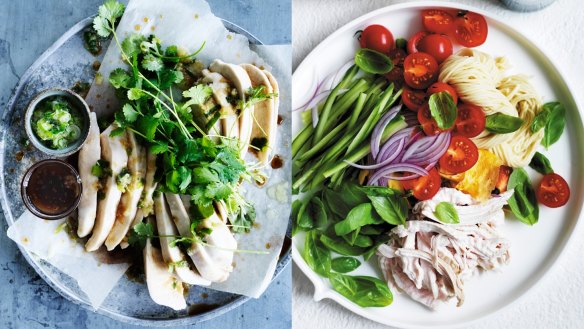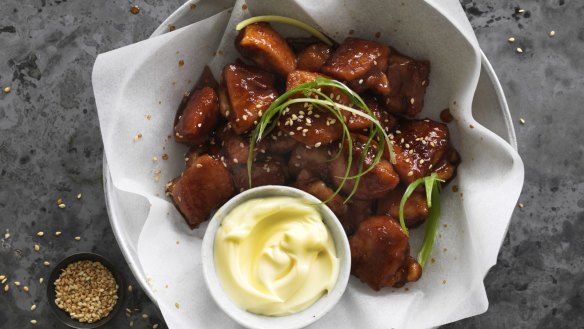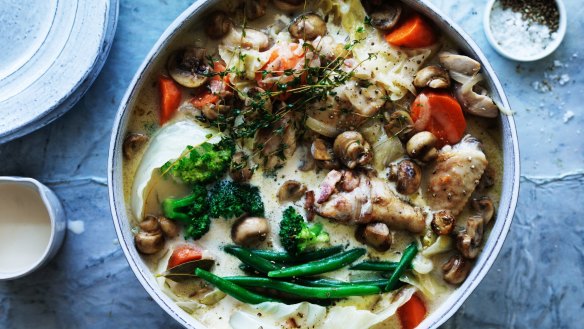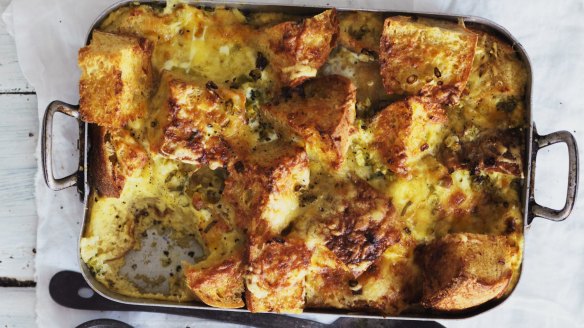Adam Liaw on how to cook three meals a day, every single day

QUARANTINE COOKING
Let's be honest, until a couple of weeks ago, how many of us really cooked three meals a day on a regular basis?
Maybe on an average day you skipped breakfast and grabbed some sushi for lunch at the office. A home-cooked dinner perhaps four nights out of seven, takeaway one night, cereal another (because you couldn't be bothered), and then dinner out with friends to round out the week.
If that sounds familiar, you'll get no judgement from me. That's a pretty standard week for a lot of people. Honestly, if you were cooking at home four nights a week I'd say you're doing pretty well.
Regardless, in this brave new world we're all in, making the shift from less than 10 home-cooked meals per week to somewhere in the vicinity of 21 is going to take some getting used to. Here are my tips.

Focus on staples
"Keep it simple" has always been a great mantra in the kitchen (and out of it), but it's never been more true than right now.
You might be tempted to swing for the fences with the ambitious project bake you've been dying to try, but from an isolation standpoint, a stunning cake that you can't even share with friends may not be the most sensible replacement for a square meal right now.
Spending time on staples instead is a better return on investment. Everybody cooks differently, so your staples are entirely your own. What constitutes "essential business" in your kitchen is for you alone to decide.
Personally, I can't go past a homemade chicken stock, a good salad dressing in the fridge (try this fried onion vinaigrette), a bottle of homemade teriyaki sauce, hot chilli oil, and a pot of rice.
With those staples I can make all kinds of dishes in minutes, from fried rice to Japanese-style chicken wings to super-simple soups (such as my green soup).

Keep your staples basic
Whatever staples you feel you need in your kitchen, avoid seasoning and flavouring them too much. Making something less flavourful might seem like odd cooking advice, but restraint with seasoning and flavouring keeps your options open.
For example, I make chicken stock about once a week (from the carcass of a whole chicken I debone) and it is literally just chicken bones boiled in water. I don't season it with salt, and I don't add herbs or onions or garlic.
With a basic stock in the fridge, I can add flavourings and seasonings later to turn the same stock into a risotto (with some rice, white wine, onion and garlic), a Chinese soup (with egg, ginger and spring onion) or an elegant chicken stew (with bay leaves and thyme, pictured above).

Love leftovers
We need to let go of the idea that leftovers are something unintended or troublesome. I love leftovers because it means I already have a head start on the next meal. The wisdom of traditional cuisines has much to offer on this.
Fried rice is made with day-old rice not just as a way to use it up, but because day-old rice holds its texture better when fried. I'll often cook extra rice for an evening meal so that I have enough to make fried rice the next day.
Stale bread makes better French toast, croutons and bread pudding (sweet or savoury (pictured) so it's worth planning ahead for these things. Turn some into breadcrumbs for a schnitzel at home now that the pubs are closed.
These might sound like strategies for reducing waste but they're not. That's the point. If you're planning for it, it was never "waste" to begin with.
Think in pairs
If planning for leftovers seems hard to get your head around, try starting off by thinking in pairs. In every meal try to find one part of it to repurpose to another meal.
Most of us know how to reuse a good bolognese: on a baked potato, in a toastie, even with rice, salad and salsa as a spin on Okinawan taco rice...
The same principles apply to just about anything.
Ratatouille can be a one-pot dinner with chicken, but make extra and it's a delicious lunch on some grilled sourdough, too (here are eight more ways with ratatouille).
Adding a couple of extra chicken breasts to the steamer takes no effort at all, but instead of just one dinner of chicken with ginger and spring onion oil, you'll get a lovely noodle salad the next day as well.
Finding connections that tie one meal to the next reveals a basic truth about home economics that might be comforting at a time like this – the more you cook, the easier it is.
As much as cooking every meal at home might seem daunting, you could find that making 21 meals a week isn't much harder than making 10. If you play your cards right, you might even find it easier.
Appears in these collections
The best recipes from Australia's leading chefs straight to your inbox.
Sign up- More:
- How to
